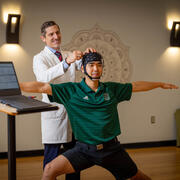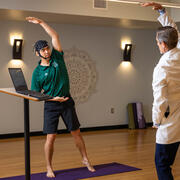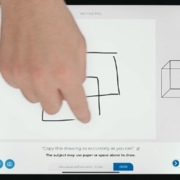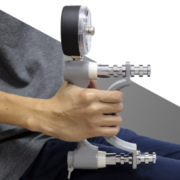Project Summary
Mild cognitive impairment (MCI) is common among older adults, and its prevalence increases with age (estimated at 8.4% for individuals aged 65–69 and 14.8% for those aged 75–79) (1). MCI carries a high risk of progression to dementia (2). Additionally, cognitive impairment is also consistently associated with the muscle strength and mass loss that occurs with aging, known as sarcopenia (3-5). There is robust evidence that grip strength predicts changes in executive function (6) and serves as a discriminating measure of neurological function and brain health (7). Gait speed, another physical performance indicator of sarcopenia, has also been associated with immediate memory (8). The experience of persistent pain also requires careful consideration when understanding the variability in physical performance and cognitive function in older adults, as pain interference can influence both domains (9). There is robust evidence that pain interference is associated with poorer cognitive performance in older adults (10).
European gerontology guidelines recommend mind-body interventions for the prevention and management of MCI (11). For individuals experiencing both cognitive impairment and sarcopenia, clinical guidelines recommend integrated physical and cognitive-behavioral therapies. Tai Chi, a multicomponent integrative mind-body exercise that integrates intentional breathing, cognitive skills like motor imagery, and whole-body movements, aligns with evidence-based recommendations for promoting and maintaining cognitive function, mood regulation, and healthy aging (including balance and fall prevention) (12-17). A crucial scientific challenge is to elucidate the processes of integrative therapies like Tai Chi that explain their therapeutic effects on cognitive function. Addressing this challenge will enable the refinement of the content and delivery of these treatments to optimize health outcomes. An essential clinical challenge is enhancing clinical reasoning to enable a more accurate selection of treatments for the most appropriate patients. This pathway aims to reduce patient burden by minimizing the trial of less effective therapies, thereby increasing the likelihood of achieving desired health outcomes. In the proposed research, we tackle these challenges by investigating the treatment responsiveness of Tai Chi in terms of cognitive function and identify neural and psychosocial baseline markers that can provide preliminary insight into the characteristics of treatment responders (Aim 1). We further investigate the treatment-moderating roles of sarcopenia and obesity on cognitive function using clinically accessible tools and measures (Aim 2).
Our long-term goal is to advance the precision and effectiveness of integrative medicine for older adults with cognitive impairment and physical frailty. Our central hypothesis is that higher heart rate variability (HRV) and prefrontal cortical activity (fNIRS) will correlate with higher levels of cognitive (executive) function assessed via Delis–Kaplan Executive Function System (D-KEFS) Color–Word Interference Test and the Repeatable Battery for the Assessment of Neuropsychological Status (RBANS) Semantic Fluency Test at baseline (T1), and after receiving the 8-week Tai Chi program (T2). We further hypothesize that individuals with lower baseline pain interference and social isolation (PROMIS) will correlate with higher cognitive function (T1, T2). In addition, we predict that sarcopenia and obesity, defined by cutpoints for handgrip strength, gait speed, and body-mass index, will moderate the relationship between pain interference and cognitive function.
We will test these hypotheses in a single-arm clinical trial with an embedded experimental study design with 50 older adults aged 65+ years with and without MCI who will receive an 8-week Tai Chi program. Aim 1 we will characterize the neural correlates of heart rate variability and cortical activity on cognitive function, and the psychosocial correlates of pain interference and social isolation on cognitive function (T1, T2). In Aim 2, we will elucidate the moderating role of sarcopenia and obesity in the relationship between pain interference and cognitive function. We will also examine the predictive capacity of the indices for sarcopenia and obesity on cognitive function (T2). This research is significant as it seeks to advance the understanding of the neural, psychosocial, and physical mechanisms underlying the practice of Tai Chi for older adults, helping to explain their therapeutic effects. The study is innovative because it leverages a neuropsychological test battery that will allow us to classify the extent of MCI across participants, captures neural activation in both the resting state (HRV) and active state (fNIRS), follows guideline-based cutpoints to classify sarcopenia, and offers preliminary insights into patient profiles that may favorably respond to Tai Chi.





